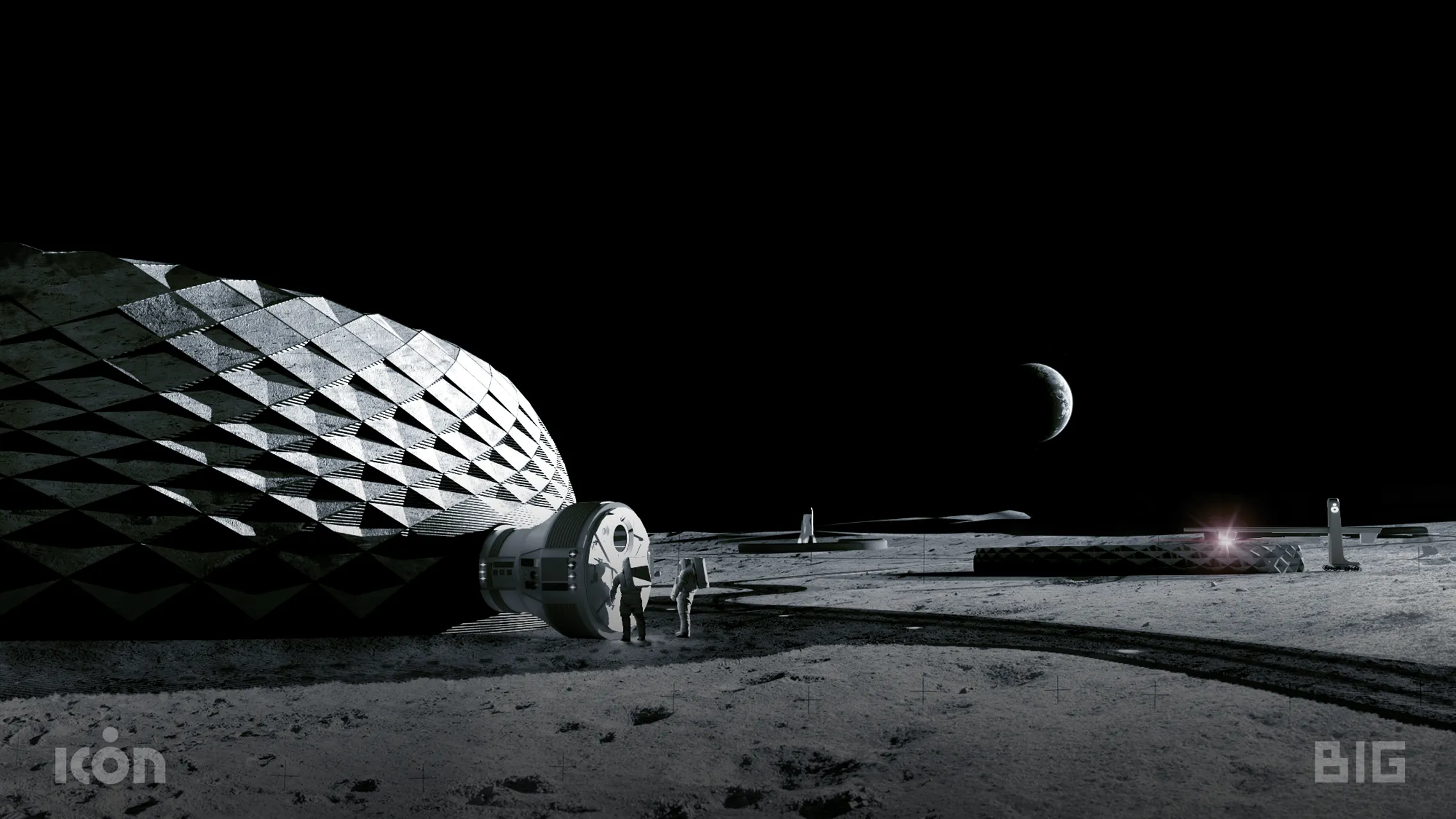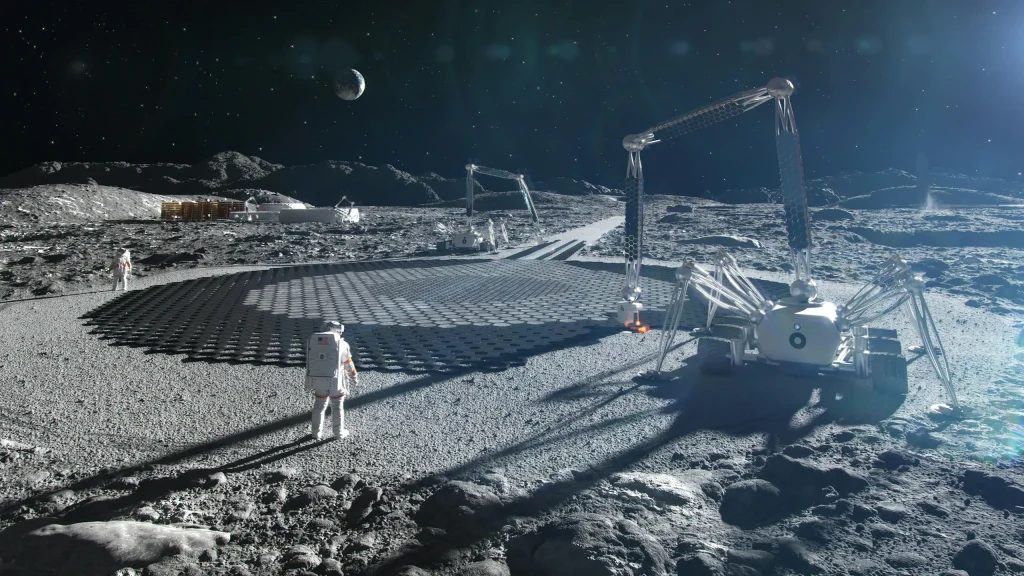The time is not so far away when humans will become a multiplanetary species. Humans are exploring innovative solutions that go beyond traditional construction techniques to face the predicted difficulties of building on planets other than Earth. Research and development are ongoing to introduce space-based construction systems that will support future exploration of the Moon and beyond.
Project Olympus by ICON is one of the space-based construction systems. Building the first 3D-printed home for humans on another planet will be the most ambitious project in human history. This will take engineering, technology, and architecture to new heights. Project Olympus is NASA’s investment in space-age technology, which may bring the future of humanity in space and resolve problems faced on Earth.
The project is supported by around $60 million in NASA financing through the Small Business Innovation Research (SBIR) program. This ground-breaking research identifies computational design and advanced building technologies as essential contributors to sustainable space exploration.
“To change the space exploration paradigm from ‘there and back again’ to ‘there to stay,’ we’re going to need robust, resilient, and broadly capable systems that can use the local resources of the Moon and other planetary bodies. We’re pleased that our research and engineering to-date has demonstrated that such systems are indeed possible, and we look forward to now making that possibility a reality,” stated by Jason Ballard, ICON co-founder and CEO.
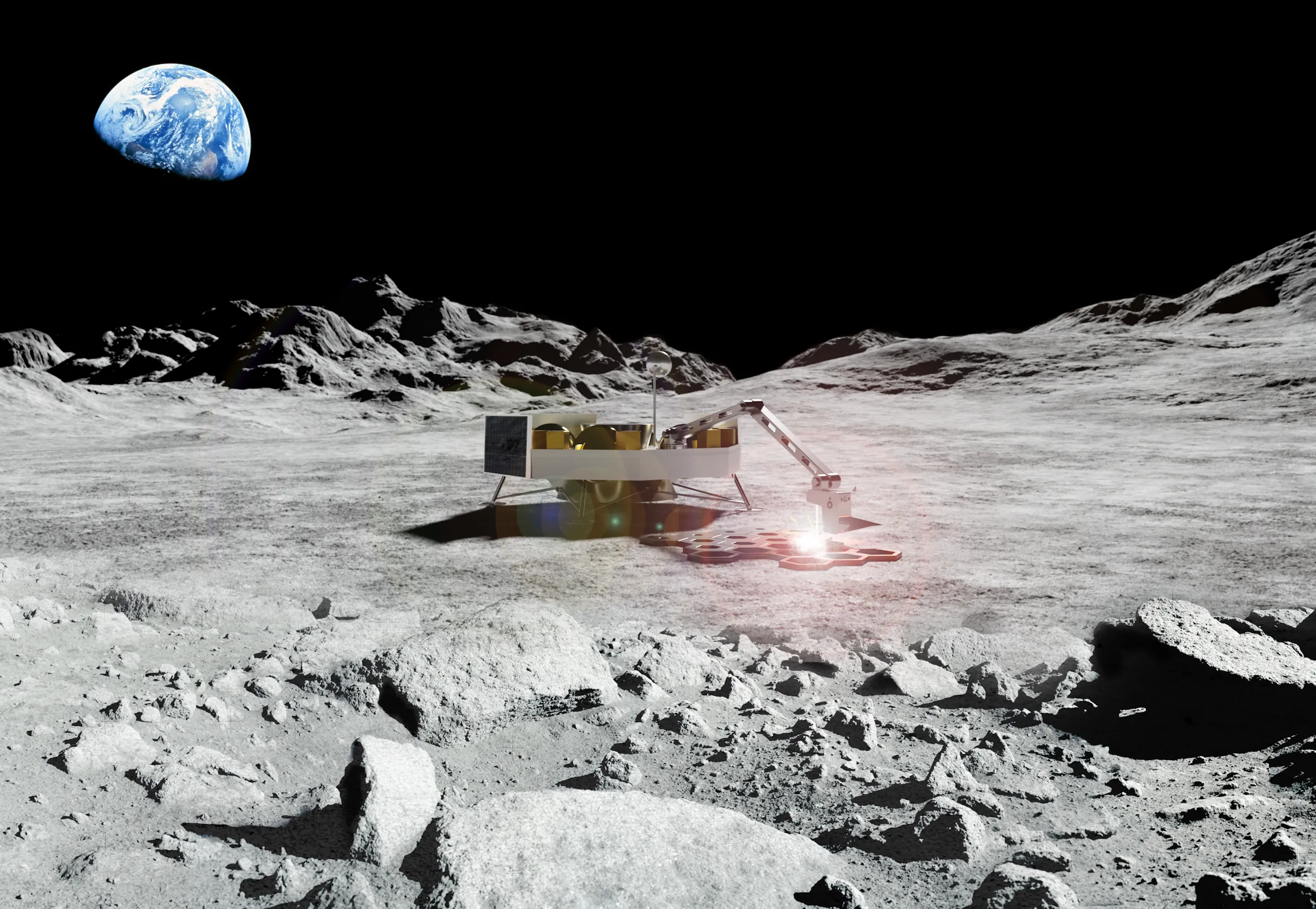
How Does Construction on the Moon Work?
Construction on the moon is not cost-effective, as it requires a considerable amount of investment to transport entire structures or construction materials. ICON is putting all its efforts into offering economically feasible solutions, utilizing In-Situ Resource Utilization (ISRU). ISRU construction involves utilizing local materials on celestial bodies, such as the Moon or Mars, to construct off-world structures.
As NASA refines its understanding of the space resources that may be available and advances the technologies to use them, space architects can incorporate the latest knowledge, designs, and capabilities into their evolving mission concepts and exploration plans to improve efficiency and sustainability. ICON offers robotic systems, components, materials, and testing facilities to government and private space companies.
A range of robotic arms with different payload requirements and physical sizes is being developed for the harsh environments of space. Studies and research are ongoing to develop various types of custom robotics tailored to the specific requirements of construction on the moon.
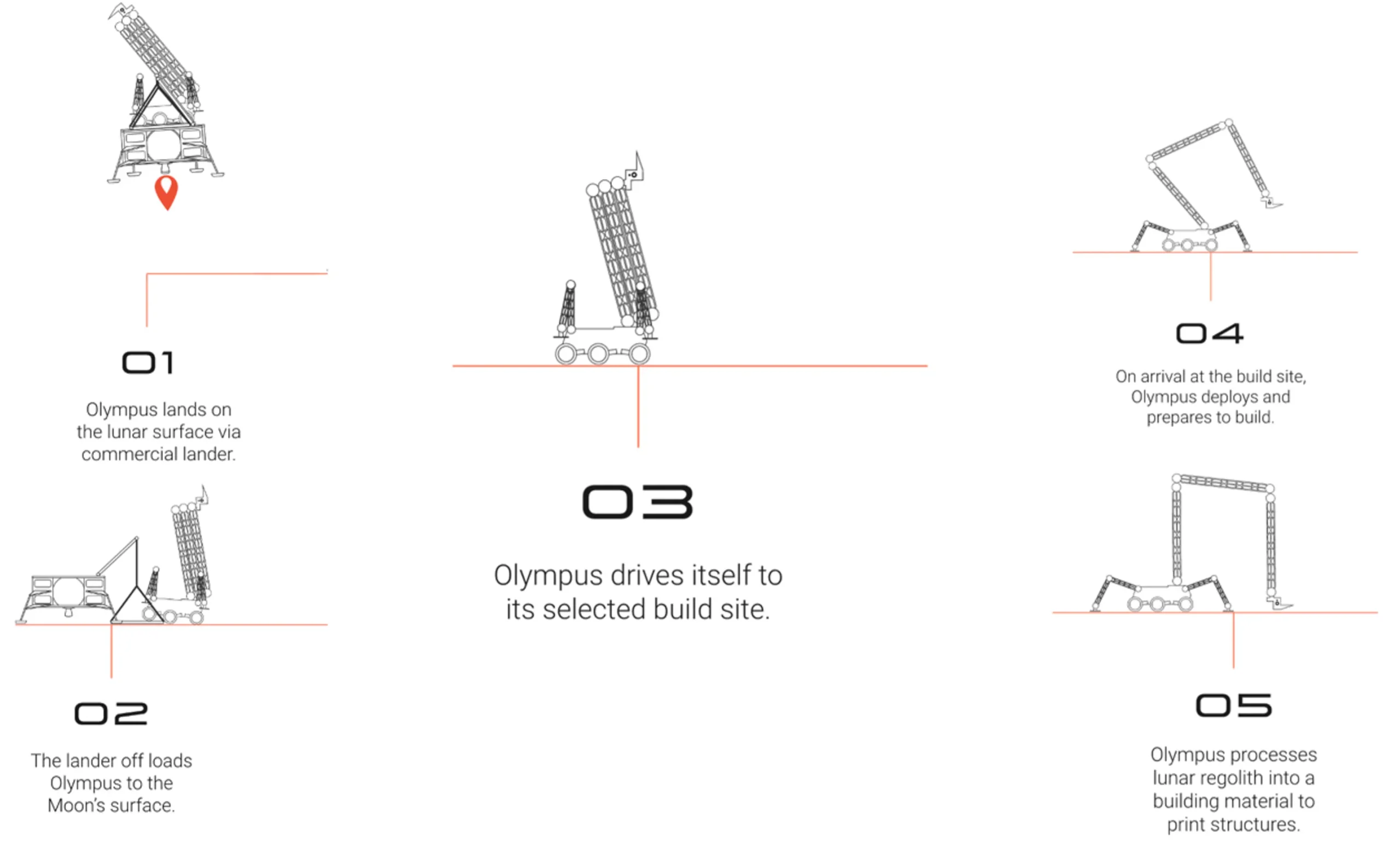
Using energy as the sole source of power, researchers are developing cutting-edge technology to transform lunar or Planetary regolith (moon dust) into durable building materials. Similar to ICON’s terrestrial building, these technologies allow for the 3D printing of structures.
These materials are stronger than concrete and can be printed in the hard vacuum of space to produce a variety of structures. ICON’s Lunar simulant was developed in partnership with NASA and the Colorado School of Mines as a high-quality mineral-based material with mechanical and chemical attributes aimed to match the Highlands near the Lunar South Pole.
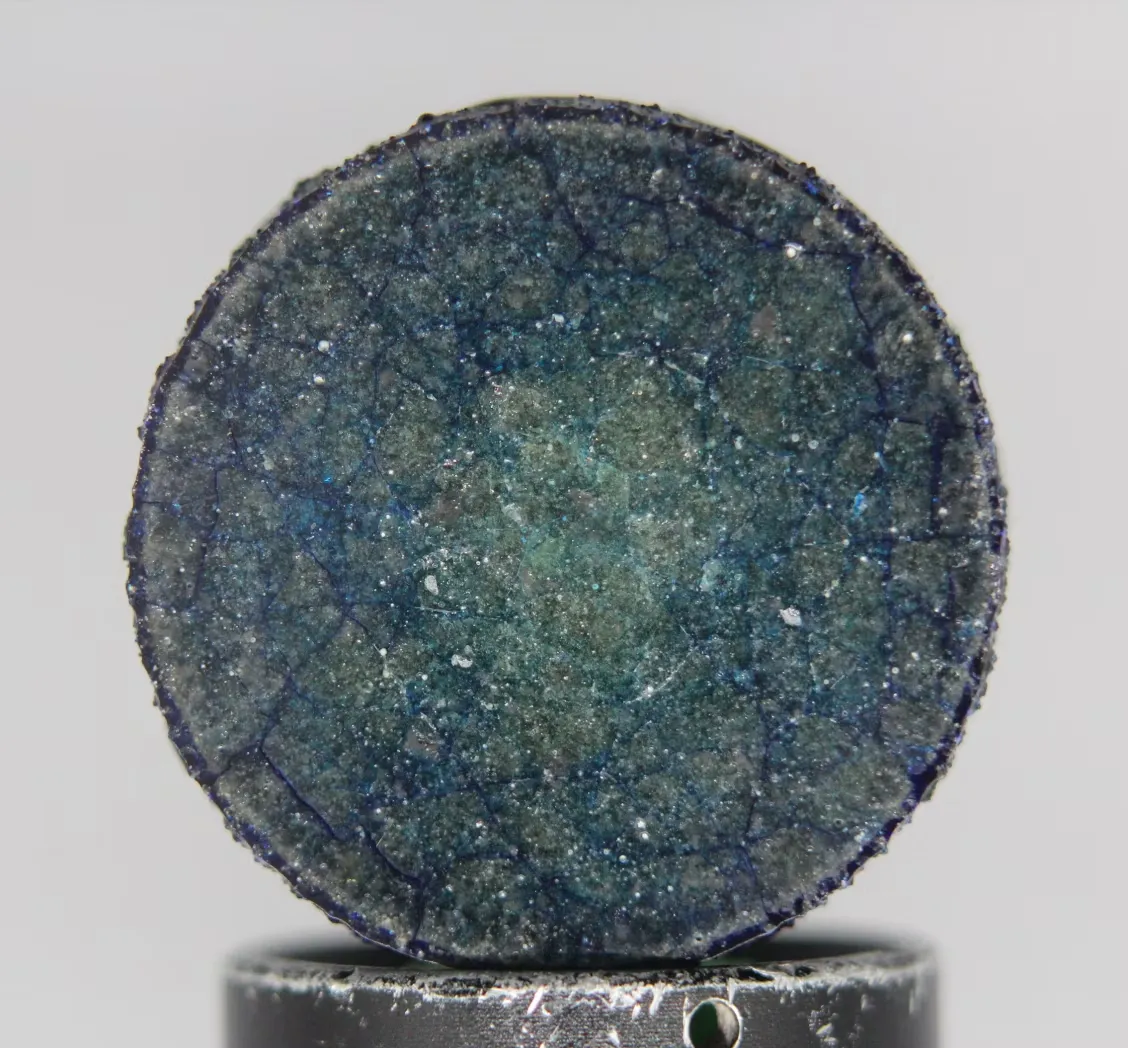
The MoonBox is a massive lunar regolith testing chamber under construction for the development of large-scale lunar missions.
More than 70 tons of ICON’s superior Lunar Highlands simulant could be supported in the chamber in a regulated environment. The chamber also has a 6DOF motion capture system, adjustable lighting control, and several stationary robots.
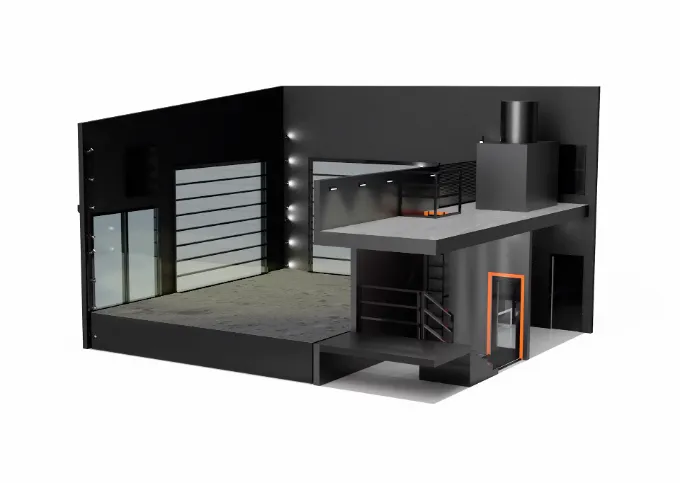
“In order to explore other worlds, we need innovative new technologies adapted to those environments and our exploration needs,” said Niki Werkheiser, director of technology maturation in NASA’s Space Technology Mission Directorate. “Pushing this development forward with our commercial partners will create the capabilities we need for future missions.”
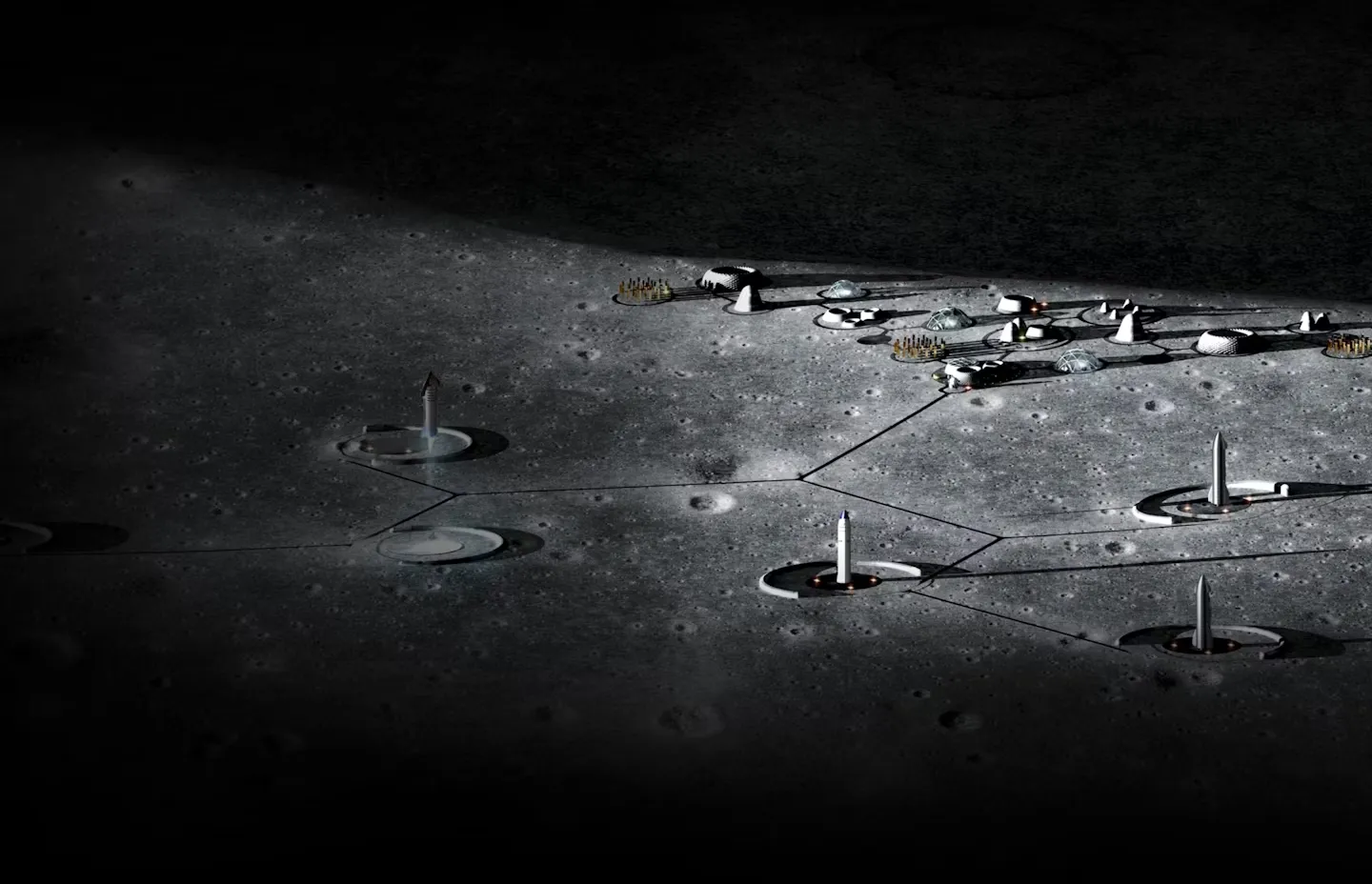
NASA has indicated that the Moon will be the first off-Earth location for sustainable surface exploration as part of the Artemis mission. It will need more than rockets to establish a long-term presence on the Moon. ,
Strong structures that offer better thermal, radiation, and micrometeorite protection than metal or inflatable homes will need to be constructed on the Moon in order to establish a permanent lunar presence. These collective initiatives, which range from landing pads to dwellings, are driven by the need to transform humanity into a spacefaring society.
Explore the world of 3D printing with PAACADEMY’s expert-led workshops. Exclusive 3D printing bundles like Digital Fabrication and Advanced 3D-Printing offer hands-on learning with professional tools and workflows, all at a significantly discounted rate.
